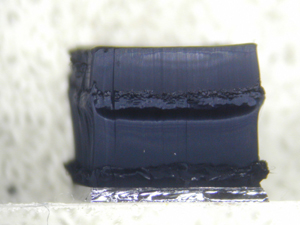IBM scientists report success in patterning an array of carbon nanotubes on a silicon wafer and their application in the construction of hybrid chips with more than 10,000 functioning transistors. The scientists say their breakthrough promises to guarantee the sustained shrinkage of basic digital switches for more than 10 years. Stanford professor Subhasish Mitra says the advance also would likely boost the speed at which transistors can be turned on and off. “These devices outperformed any other switches made from any other material,” notes IBM scientist Supratik Guha. “We had suspected this all along, and our device physicists … showed that we would see a factor of five or more performance improvement over conventional silicon devices.” IBM researchers think the refinement of carbon nanotube use will lead the way to sharp gains in both chip speed and transistor density. Guha says carbon nanotubes possess more promising performance traits than other materials engineers are investigating to help maintain Moore’s Law, such as graphene. He notes that perfecting the process calls for a much purer form of the carbon nanotube material, in order to eliminate metallic characteristics.
http://bits.blogs.nytimes.com/2012/10/28/i-b-m-reports-nanotube-chip-breakthrough/


The research, which was published in Nature Nanotechnology (“ High-density integration of carbon nanotubes via chemical self-assembly ”), was hinted at last year during the IEEE International Electron Devices Meeting (IEDM) .